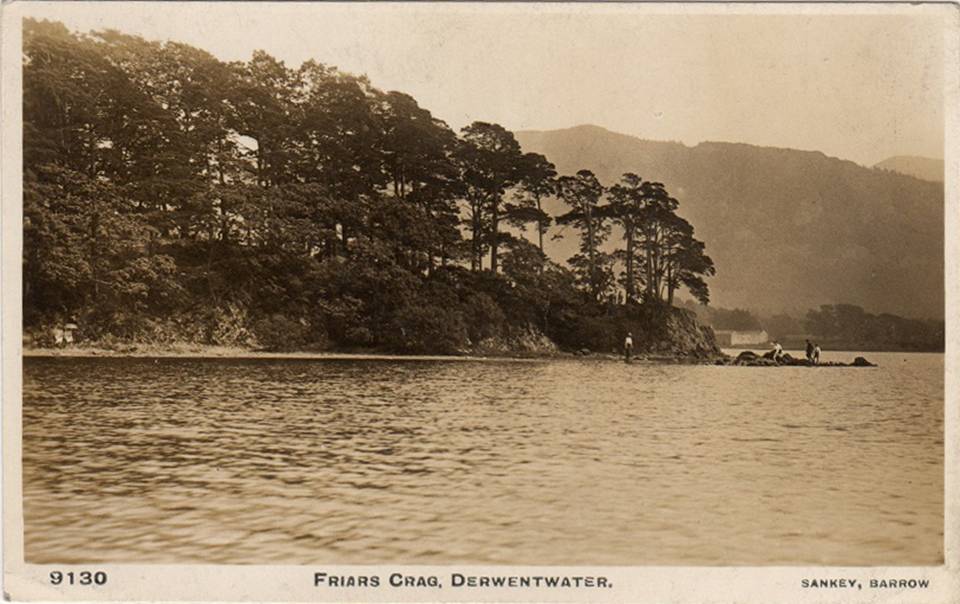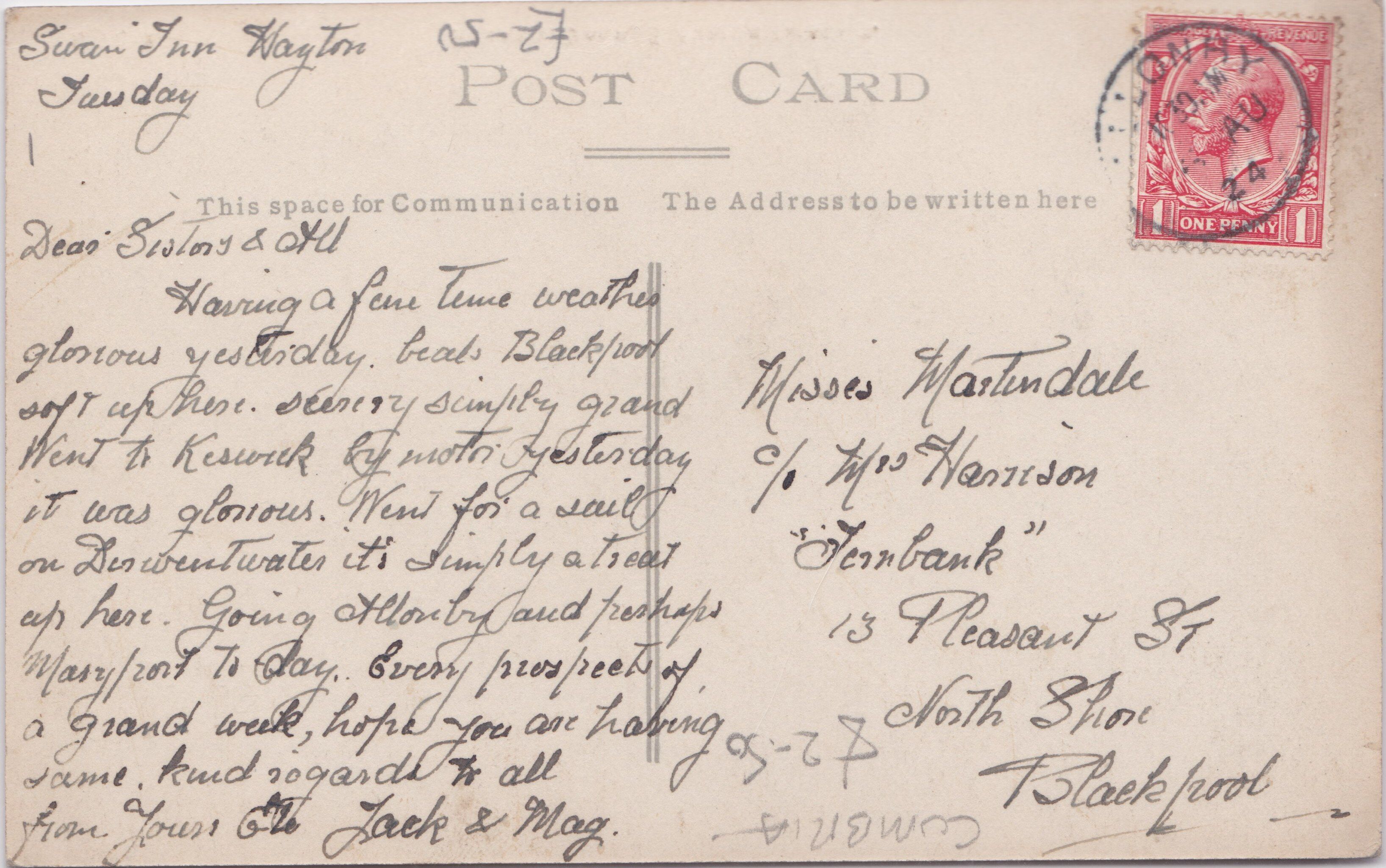| Further Information | |
|---|---|
| Cumbria Archives Reference: | ??? |
| Sankey Number: | 9130 |
Senders Message
"Swan Inn -Hayton?- Tuesday Dear Sisters & Oth Having a fine time weather glorious yesterday beats Blackpool so up here. Scenery simply grand. Went to Keswick by motr yesterday it was glorious. Went for a sail on Derwentwater it's simply a treat up here. Going Allonby and perhaps Maryport today. Every prospect of a grand week, hope you are having same. Kind regards to all from your Jack & Mag”
| Sender | ||
|---|---|---|
| Posted From: | Allonby -in Cumberland- | |
| Date Posted: | Friars' Crag, sometimes spelled Friars Crag, is a promontory overlooking Derwentwater near Keswick, Cumbria, in the English Lake District. It is a popular site with visitors and was acquired for the public by the National Trust in the 1920s. As well as its natural beauty, Friars' Crag is known for its literary and artistic associations with, among others, Robert Southey, J. M. W. Turner, John Ruskin and Arthur Ransome Background and description The 7th-century priest and hermit Saint Herbert lived on an island in Derwentwater. Friars' Crag derives its name from its use as an embarkment point by monks making a pilgrimage to the island. Both Friars' Crag and St Herbert's Island are now owned by the National Trust. The crag is at the end of a promontory about half a mile south of the modern boat landing-stages at Keswick, and is reached by a footpath along the eastern side of the lake. Friars' Crag has been valued as a beauty spot since at least the 18th century. J. M. W. Turner painted the view from the crag in either the late 18th or early 19th century. The art critic and social reformer John Ruskin wrote of the spot: 'The first thing that I remember as an event in life was being taken by my nurse to the brow of Friars' Crag, Derwentwater. The intense joy mingled with awe that I had in looking through the hollows in the mossy roots over the crag into the dark lake has associated itself more or less with all twining roots of trees ever since'. Ruskin, a pioneer of the protection of the unspoiled beauty of the Lake District, said that the view from Friars' Crag 'is one of the three or four most beautiful in Europe' In October 1900, nine months after his death, a monument to Ruskin was unveiled at the side of the path to Friars' Crag. The driving force behind the erection of the Ruskin memorial was Hardwicke Rawnsley, one of the three founders of the National Trust. He died in 1920, and in his memory the trust raised money to buy Friars' Crag and the surrounding land. A memorial to him was installed in 1922. https://en.wikipedia.org/wiki/Friars%27_Crag | |
| Postmark Date: | ??/08/1924 | |
| Stamp if Shown: | Scarlet George V one penny | |
| Receiver | ||
|---|---|---|
| Receivers Name: | Misses Martindale c/o Miss Harrison | |
| Address: | Fernbank' 13, Pleasant Street, North Shore | |
| Town or City: | Blackpool | |

